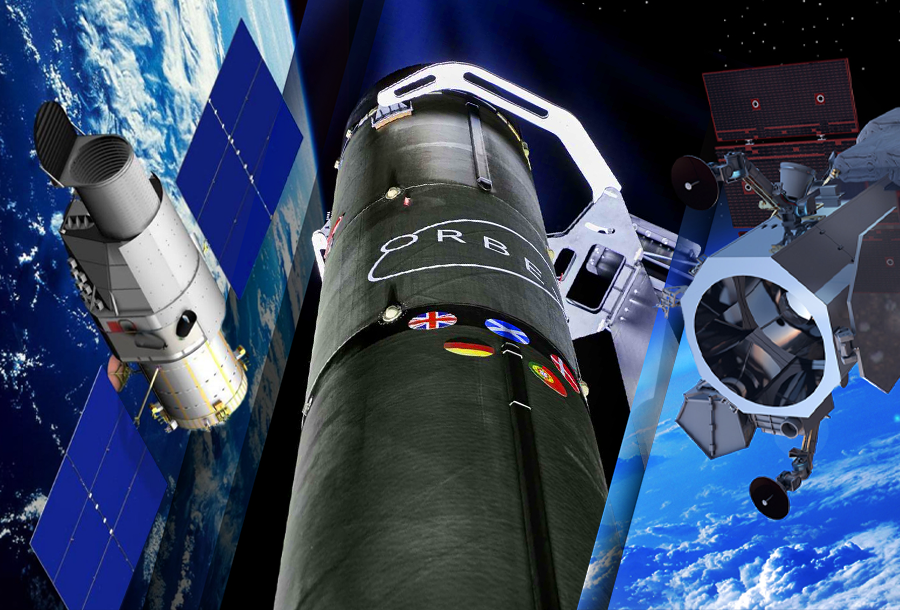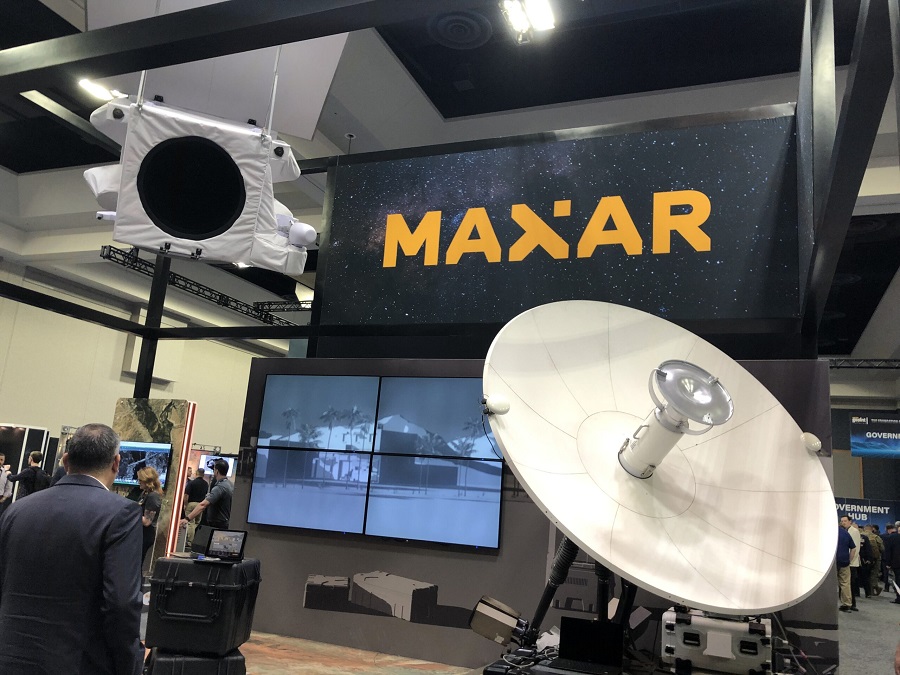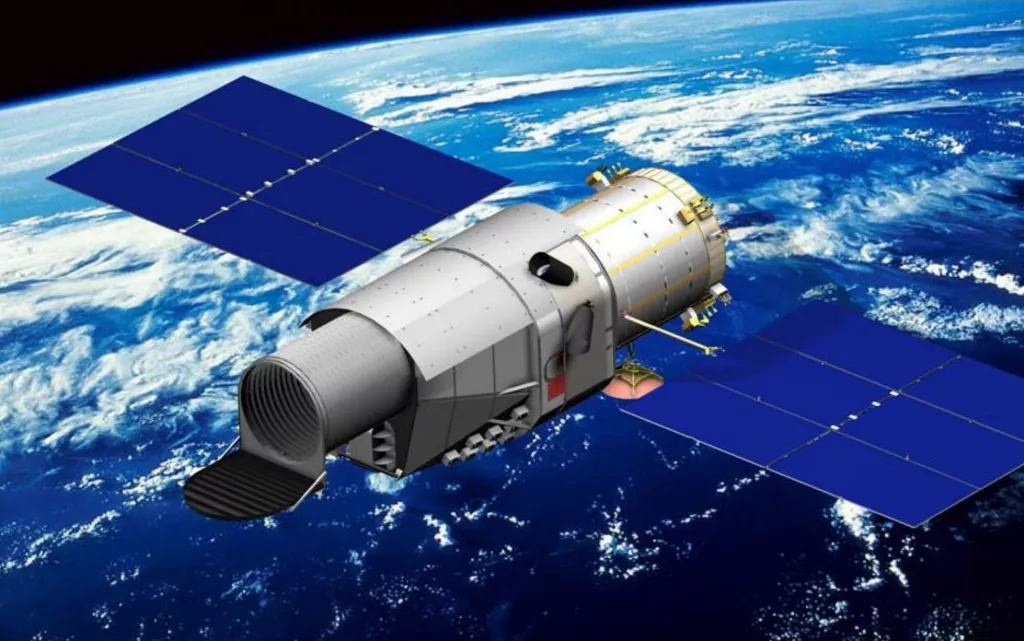Selection of space news for breakfast: Maxar will offer the military to connect directly to its satellites via a mobile terminal, and China will launch a large space telescope. Orbex showed a prototype of an environmentally friendly launch vehicle.

- US military wants nuclear rocket ideas for missions near the moon
- Colombia signs Artemis Accords
- Virgin Orbit is buying 2 more rocket-launching planes
- Maxar presented mobile terminals for access to its satellites
- SpaceX training begins this month for first commercial spacewalk mission
- Spire Global adding high-capacity Ku-band antennas to satellites
- Orbex unveils reusable Prime rocket for small satellite launches from Scotland
- SES Partners with Planet for NASA Relay Network Contract
- Electric vehicle company with NASA contract issues financial warning
- China confirms intention to launch large space telescope
- Herding rockets: Improved Space Traffic Management will accelerate industry growth
- Russia is ‘ramping up’ efforts to take down Starlink internet over Ukraine
- A solar power plant in space? The UK wants to build one by 2035
- What’s the best way to build landing pages on the moon?
US military wants nuclear rocket ideas for missions near the moon
The U.S. military is ready to take the next step in developing a nuclear rocket to help monitor Earth-moon space, an area it has deemed a high strategic priority. The Defense Advanced Research Projects Agency (DARPA) announced that it’s seeking proposals for the second and third phases of a project to design, develop and assemble a nuclear thermal rocket engine for an expected flight demonstration in Earth orbit by 2026.
Colombia signs Artemis Accords
Marta Lucía Ramírez, vice president and foreign minister of Colombia, signed the agreement at NASA Headquarters May 10 alongside NASA Deputy Administrator Pam Melroy. Colombia is the 19th nation to join the Accords, unveiled in 2020, and the third in Latin America after Brazil and Mexico.
Virgin Orbit is buying 2 more rocket-launching planes
Virgin Orbit is buying two more planes that will help get satellites to the final frontier. The company, part of Richard Branson’s Virgin Group, delivers small satellites to orbit using a rocket called LauncherOne. The rocket leaves Earth tucked beneath the wing of a carrier airplane, which drops it at an altitude of about 35,000 feet (10,700 meters). This air-launch strategy increases flexibility and responsiveness, Virgin Orbit representatives say.
Market News

Maxar presented mobile terminals for access to its satellites
Maxar Technologies is known for its images of the Earth’s surface, in particular, the events of the Ukrainian-Russian war presented mobile terminals. They are a satellite dish and the terminal. Such a set of equipment allows connecting to their satellites. We are talking about direct access to the company’s optical-electronic surveillance satellites and Radarsat-2 radar satellites of the Canadian company MDA. According to Maxar President Daniel Jablonski, the company is now receiving a huge number of requests from government organizations and new equipment is the answer to them.
SpaceX training begins this month for first commercial spacewalk mission
The four-person crew who will fly on the all-private Polaris Dawn mission will begin training for their ride. It will include the first commercial spacewalk using SpaceX spacesuits. However, this will not be the only record, as the mission should also reach the highest near-Earth orbit in history. It will exceed the orbit of the ISS three times.
Spire Global adding high-capacity Ku-band antennas to satellites
Spire Global said it is installing Ku-band antennas from fellow smallsat operator Kepler Communications on at least three satellites to offer higher capacity data services beginning next year. Their deal enables Spire to add high-speed Ku-band capabilities to its fleet in low Earth orbit under Kepler’s existing regulatory licenses, and includes an option to scale up to 50 satellites.
Orbex unveils reusable Prime rocket for small satellite launches from Scotland
The U.K.-based rocket firm Orbex has unveiled a prototype of its environmentally friendly small-satellite launching rocket as it prepares for a debut flight in just a few months. The reusable Prime rocket, the first micro-launcher developed in Europe, now awaits tests on a launch pad at Space Hub Sutherland, a new spaceport in northern Scotland, which received planning permission in August 2020.
SES Partners with Planet for NASA Relay Network Contract
SES Government Solutions (SES GS) is bringing Planet Labs onto its team for a recently awarded NASA contract to develop and demonstrate near-Earth communication services. NASA awarded SES GS a $28.96 million contract on April 20, along with contracts to Inmarsat Government, Kuiper Government Solutions, SpaceX, Telesat U.S. Services, and Viasat. This Communications Services Project (CSP) will develop high-rate and high-capacity two-way communications to replace NASA’s aging Tracking and Data Relay Satellite (TDRS) constellation, which provides information relay services to the International Space Station, Hubble Space Telescope, and other missions.
Electric vehicle company with NASA contract issues financial warning
The electric vehicle company that recently won a NASA contract to provide a modern version of the “Astrovan” to transport Artemis astronauts to the launch pad warned it may soon run out of money. In a filing with the Securities and Exchange Commission, Canoo Technologies issued what is known as a “going concern” warning because of continued losses. The company reported a net loss of $125.4 million in the first quarter and had $104.9 million of cash available at the end of the quarter.
Interesting

China confirms intention to launch large space telescope
Beijing has confirmed plans announced earlier to launch a large space observatory, the capabilities of which will be comparable to the Hubble telescope. The Chinese space telescope was named “Xuntian”, which translates as “Space Sentinel”. It will be launched at the end of 2023 using the Changzheng-5B rocket and will begin observations in 2024.
Herding rockets: Improved Space Traffic Management will accelerate industry growth
A market ecosystem that incentivizes the rapid development and fielding of advanced Space Traffic Management (STM) technologies will be a key enabler to the sustainable growth of the space economy. As defined by the International Academy of Astronautics, STM protects future sector growth by encouraging the development and application of technology to preserve access to space and assets already in orbit. STM technologies must be fielded today with support from both government and industry.
Russia is ‘ramping up’ efforts to take down Starlink internet over Ukraine
The country, which staunchly admits only to having started a “special military operation” in Ukraine, has been behind several cyberattack campaigns against satellite internet providers since its invasion. SpaceX CEO Elon Musk tweeted about this today, May 11. “Starlink has been able to repel all attempts to create obstacles and hacker attacks in the Russian cyberwar at the moment, but they are increasing their efforts,” Musk wrote.
A solar power plant in space? The UK wants to build one by 2035
The United Kingdom is getting serious about beaming solar power from space and thinks it could have a demonstrator in orbit by 2035.
Over 50 British technology organizations, including heavyweights such as aerospace manufacturer Airbus, Cambridge University and satellite maker SSTL, have joined the U.K. Space Energy Initiative, which launched last year in a quest to explore options for developing a space-based solar power plant.
What’s the best way to build landing pages on the moon?
While NASA and other space agencies intend to leverage local resources as much as possible—a process known as in-situ resource utilization (ISRU)—creating lunar bases will still require lots of materials and machinery to be shipped from Earth. In a recent study, Philip Metzger and Greg Autry reviewed the cost and energy consumption of building landing pads on the lunar surface. After considering various construction methods, they determined that a combination of additive manufacturing and polymer infusion was the most efficient and cost-effective means.
Follow us on Twitter to get the most interesting space news in time
https://twitter.com/ust_magazine
